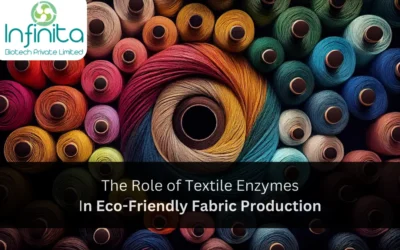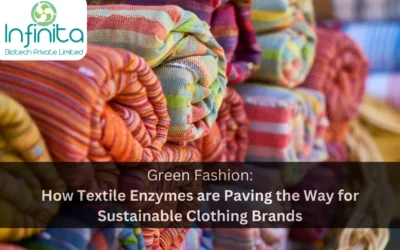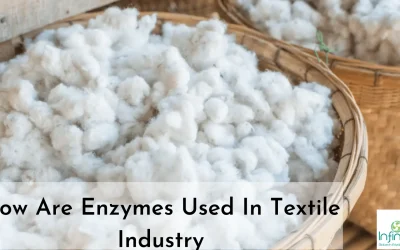In recent years, the textile industry has undergone significant transformations, driven by the pursuit of more sustainable and efficient production processes. One notable innovation that has garnered attention is the use of enzymes in textile processing. Enzymes, with their ability to catalyze chemical reactions, offer a promising solution to many of the challenges faced by the industry, from improving textile quality to reducing environmental impact. This article aims to explore the role of enzymes in textile processing, trace their evolution, highlight their impact on textile quality, address their environmental implications, and discuss the challenges and solutions in implementing enzyme innovations.
Understanding Enzymes in Textile Processing
The Role of Enzymes in Textile Processing
Enzymes play a crucial role in various stages of textile processing, from the preparation of fibers to the finishing of fabrics. Different enzymes are utilized to achieve specific outcomes at each stage. These biocatalysts help break down and modify natural fibers, such as cotton and silk, as well as synthetic fibers like polyester and nylon.
One common application of enzymes in textile processing is in the removal of impurities and sizing agents present in raw fibers. Enzymes, such as amylases and proteases, effectively degrade the starches and proteins found on the fibers, resulting in cleaner and more uniform textiles. This enhances subsequent dyeing and finishing processes.
Types of Enzymes Used in Textile Processing
A wide range of enzymes is employed in textile processing, each with specific properties and applications. Cellulases, for instance, effectively remove the microfibrils on the surface of cotton fibers, resulting in a softer and more absorbent fabric. Amylases, on the other hand, break down starches, which are commonly used as sizing agents, providing improved fabric handle and dye uptake.
Other enzymes commonly employed include proteases, which remove protein-based stains and impurities, lipases, which eliminate fatty residues, and pectinases, which aid in the degradation of plant-based fibers. The use of these enzymes not only improves the properties of textiles but also reduces the reliance on harsh chemicals and energy-intensive mechanical processes.
Let’s delve deeper into the fascinating world of enzymes in textile processing. Enzymes have been used in this industry for centuries, with their discovery dating back to ancient civilizations. In ancient Egypt, for example, enzymes derived from fruits were used to soften and dye fabrics. This early application of enzymes laid the foundation for the modern textile industry’s reliance on these remarkable biocatalysts.
Enzymes are highly specific in their actions, which makes them ideal for textile processing. They can target and break down specific components of fibers, such as starches, proteins, and fats, without affecting the overall structure of the fabric. This specificity allows for precise control over the desired outcome, whether it’s improving fabric softness, enhancing dye absorption, or removing stains.
Moreover, enzymes offer numerous environmental benefits in textile processing. Traditional methods of fiber preparation and finishing often involve the use of harsh chemicals and energy-intensive mechanical processes. Enzymes, on the other hand, are biodegradable and operate under mild conditions, reducing the environmental impact of textile production. They also enable the use of milder chemicals, further minimizing the release of harmful substances into the environment.
As the textile industry continues to prioritize sustainability and eco-friendly practices, the demand for enzymes in textile processing is expected to grow. Researchers are constantly exploring new enzymes and optimizing existing ones to improve their efficiency and expand their applications. This ongoing innovation ensures that enzymes will remain a vital tool in the quest for sustainable and high-quality textiles.
The Evolution of Enzyme Innovations in Textiles
Historical Overview of Enzyme Use in Textiles
The use of enzymes in textile processing dates back to the early 20th century when researchers discovered the potential of microbial enzymes in improving textile quality. However, it was not until the 1980s that enzyme-based processes gained widespread adoption in the industry.
Initially, enzymes were used primarily for desizing, a process of removing sizing agents from newly woven fabrics. Over time, their applications expanded to include various stages of textile processing, such as bio-polishing, bio-scouring, and bio-finishing. Advances in enzyme technology have led to the development of more efficient and specific enzymes, allowing for improved textile quality and reduced environmental impact.
Enzymes have revolutionized the textile industry by providing a sustainable alternative to traditional chemical-based processes. By harnessing the power of nature, textile manufacturers have been able to achieve remarkable results while minimizing their ecological footprint. Enzymes work by catalyzing specific chemical reactions, breaking down complex compounds into simpler forms, and enhancing the overall performance of textile processing.
Recent Advances in Enzyme Technology for Textiles
In recent years, significant advances have been made in enzyme technology, particularly in the field of textile processing. The development of genetically engineered enzymes has enabled the creation of tailor-made biocatalysts with enhanced specificity and performance.
Novel enzyme formulations have also been developed to address specific challenges faced by the textile industry. For example, enzymes capable of functioning under harsh conditions, such as high temperature and alkaline pH, have been designed to improve the efficiency of textile processing. Additionally, enzyme cocktails, consisting of multiple enzymes, have been formulated to tackle complex stains and impurities, resulting in cleaner and more sustainable textile production.
Enzyme technology has not only improved the efficiency and quality of textile processing but has also opened up new possibilities for innovative textile products. For instance, enzymes can be used to create fabrics with unique properties, such as enhanced moisture-wicking capabilities or increased durability. By incorporating enzymes into the textile production process, manufacturers can offer consumers a wide range of functional and sustainable textile products.
The future of enzyme innovations in textiles looks promising. Researchers are continuously exploring new enzymes and enzyme-based processes to further optimize textile production. From developing enzymes that can degrade synthetic fibers to finding ways to reduce water and energy consumption during enzymatic treatments, the possibilities for enzyme technology in textiles are endless.
As the textile industry continues to prioritize sustainability and eco-friendly practices, enzymes will play a crucial role in shaping the future of textile processing. With ongoing research and development, we can expect to see even more exciting advancements in enzyme technology, leading to a greener and more efficient textile industry.
The Impact of Enzyme Innovations on Textile Quality
Improvements in Textile Durability and Longevity
Enzyme innovations have had a significant impact on textile durability and longevity. By selectively removing undesirable components from fibers, enzymes minimize damage caused by harsh chemical treatments and mechanical processes, thus prolonging the lifespan of textiles. Additionally, the use of enzymes in bio-polishing processes results in smoother and more resistant fabrics, reducing pilling and improving overall wearability.
Enhancements in Textile Color and Texture
Enzymes have also contributed to improvements in textile color and texture. By effectively removing impurities and enhancing fiber surface smoothness, enzymes create a more uniform substrate for dyeing. This results in enhanced color vibrancy, improved color fastness, and reduced dye consumption. Moreover, the bio-polishing process, enabled by enzymes, imparts a soft and smooth texture to fabrics, enhancing their comfort and appeal.
Environmental Implications of Enzyme Use in Textiles
Reduction in Chemical Use and Waste
One of the significant advantages of enzyme-based processes in textile production is the reduction in chemical use and waste generation. Enzymes enable the replacement of traditional chemicals, such as strong acids and alkalis, with milder and more sustainable alternatives. This not only minimizes the environmental impact of textile production but also improves the working conditions for textile workers. Additionally, enzymatic processes generate fewer by-products and waste, decreasing the burden on waste treatment systems.
Energy Efficiency and Sustainability in Textile Processing
Enzyme innovations also contribute to improved energy efficiency and sustainability in textile processing. Compared to traditional mechanical processes, enzyme-based treatments require lower temperatures, shorter processing times, and reduced water consumption. These factors result in significant energy savings and lower carbon emissions. Furthermore, enzymes are biodegradable and pose minimal risk to the environment. Their enzymatic activity is specific, meaning that they only affect the targeted substances, minimizing the ecological impact of textile processing.
Challenges and Solutions in Implementing Enzyme Innovations
Overcoming Technical Hurdles in Enzyme Application
While enzyme innovations offer numerous advantages, their successful implementation in textile processing is not without challenges. One significant hurdle is the compatibility of enzymes with different textile materials and processing conditions. Enzymes can be sensitive to temperature, pH, and the presence of inhibitors. Therefore, extensive research and development efforts are required to identify suitable enzymes and optimize their performance under various processing parameters.
Understanding the interplay between enzymes, fibers, and processing conditions is crucial in achieving consistent and reliable outcomes. Through collaboration between enzyme manufacturers, textile technologists, and researchers, these technical hurdles can be overcome, leading to more efficient and sustainable enzyme-based processes.
Economic Considerations for Enzyme Use in Textiles
Another challenge in implementing enzyme innovations in textile processing lies in the economic considerations. While enzymes offer benefits such as reduced chemical costs and improved textile quality, their initial investment costs can be higher compared to traditional chemical processes. However, it is essential to consider the long-term economic advantages, including reduced energy consumption, improved production efficiency, and enhanced product value. Advancements in enzyme technologies, coupled with economies of scale, are expected to drive down the costs, making them more financially viable in the long run.
Conclusion
Enzyme innovations have emerged as a game-changer in the textile industry, paving the way for more sustainable, efficient, and high-quality textile processing. The use of enzymes offers numerous benefits, including improved textile durability and longevity, enhanced color and texture, reduced chemical use and waste generation, and improved energy efficiency. Despite the challenges associated with enzyme application and economic considerations, the ongoing advancements in enzyme technology and increased industry collaboration are promising. As the textile industry continues to prioritize sustainability and innovation, enzyme innovations are set to shape the future of textile processing.







